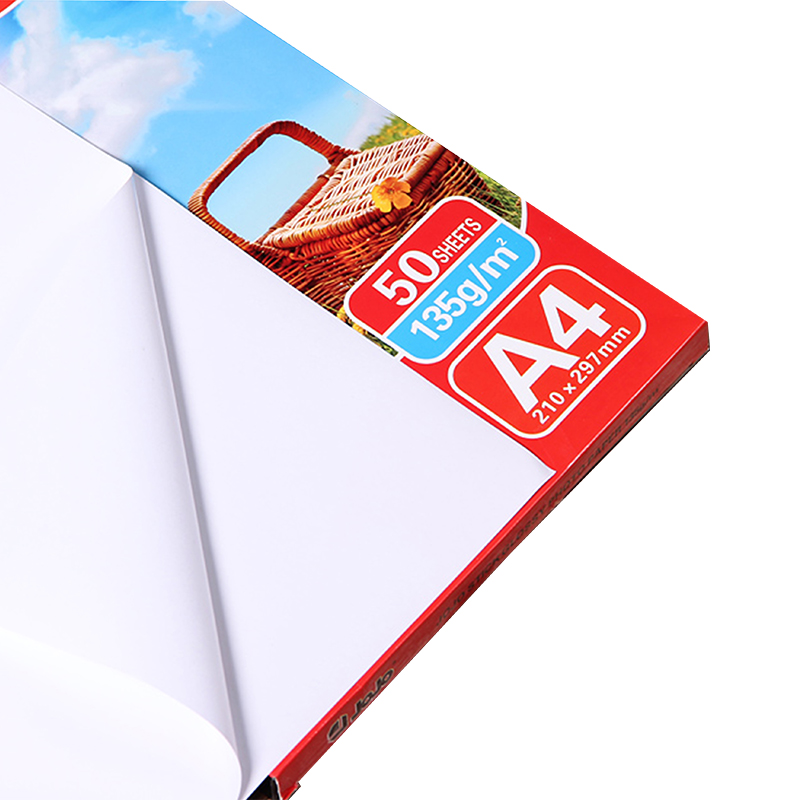If you need any help, please feel free to contact us
Customization Trends In Small-Batch Photo Printing
In recent years, small-batch photo printing has grown steadily as more individuals and businesses seek personalized and flexible printing solutions. Unlike large-scale production, small-batch printing allows for greater customization, quicker turnaround times, and the ability to cater to niche markets. As technology and materials advance, the demand for specialized photo papers and custom print finishes continues to shape industry trends.
One significant factor influencing customization in small-batch photo printing is the choice of photo paper. The type of paper directly impacts print quality, texture, durability, and the final appearance of images. Among the popular materials used are high gloss photo paper A4, photo paper 200gsm, and double sided satin photo paper A4. Each offers unique characteristics that cater to different printing needs.

High gloss photo paper A4 is favored for its reflective surface, which enhances color vibrancy and sharpness. This paper type is ideal for printing photographs where a vivid, bright finish is desired. Small businesses and individual photographers who produce portfolios, event photos, or promotional materials often prefer high gloss paper because it makes colors pop and provides a visually striking effect. However, high gloss finishes are more prone to fingerprints and glare, so handling and display conditions must be considered during customization.
In contrast, photo paper 200gsm offers a balance between thickness and flexibility. The weight, measured in grams per square meter (gsm), indicates the density and sturdiness of the paper. A 200gsm photo paper provides a substantial feel, giving prints a professional touch without being overly rigid. It is widely used in small-batch print jobs such as greeting cards, invitations, and limited-edition prints. Printers appreciate the versatility of 200gsm photo paper, as it can accommodate both glossy and matte finishes depending on customer preference.
Another trending option is double sided satin photo paper A4, which offers a smooth and soft sheen on both sides of the sheet. The satin finish reduces glare and fingerprints compared to glossy papers, making it suitable for art prints, brochures, and double-sided photographic projects. Double-sided printing capability is particularly valuable for small batches because it allows more creative freedom, such as printing portfolios, booklets, or custom photo calendars. This paper type’s surface allows for detailed color reproduction with a refined, elegant look that appeals to discerning clients.
Customization in small-batch photo printing is not limited to the choice of paper alone. Advances in digital printing technology enable high-resolution output, precise color matching, and variable data printing. This means clients can request unique edits, specific dimensions, or personalized designs without the need for large order quantities. The ability to produce short runs economically has opened up opportunities for artists, photographers, and marketers who require bespoke prints tailored to specific events or audiences.
Moreover, customization trends also reflect growing environmental awareness. Many small-batch printers now seek photo papers that are sustainably sourced or compatible with eco-friendly inks. Options such as recycled paper bases or papers certified for reduced environmental impact are gaining traction. This aligns with consumer demand for products that support sustainability without compromising on quality or aesthetic appeal.
In addition to paper and printing technologies, finishing options play a key role in customization. Laminations, coatings, and embossing can be applied selectively to enhance durability and tactile experience. For example, applying a UV coating to photo paper 200gsm can increase resistance to moisture and fading, which is beneficial for keepsakes or outdoor displays. Similarly, spot varnishes on high gloss photo paper A4 can highlight specific areas of a print, adding depth and dimension.
Packaging and presentation have also become integral to customization trends. Small-batch prints often accompany handcrafted or limited-edition products, requiring elegant packaging solutions. Custom envelopes, protective sleeves, or branded boxes can complement the quality of the printed piece and reinforce a unique brand identity. Such attention to detail can differentiate small-batch products in a market that values authenticity and craftsmanship.
Another notable trend is the incorporation of mixed media in small-batch photo printing. Some creators combine printed photos on double sided satin photo paper A4 with other materials like canvas, wood, or metal substrates. This hybrid approach allows for innovative display options and broadens the scope of personalized products available. The adaptability of digital printing facilitates these creative experiments, encouraging more tailored applications.
In summary, customization trends in small-batch photo printing continue to evolve with the advancement of printing materials, technologies, and consumer expectations. The availability of versatile photo papers such as high gloss photo paper A4, photo paper 200gsm, and double sided satin photo paper A4 enables printers to meet diverse demands while maintaining quality and efficiency. This growing flexibility benefits professionals and hobbyists alike, opening pathways to express creativity through personalized prints.
As the market for small-batch photo printing expands, companies focusing on these specialized products and services will likely explore further innovations in print media, ink formulations, and finishing techniques. Meanwhile, customers can enjoy a wider range of options to bring their visual ideas to life with clarity and style.

 English
English Español
Español 中文简体
中文简体 Português
Português

